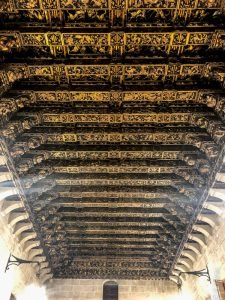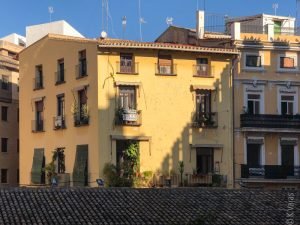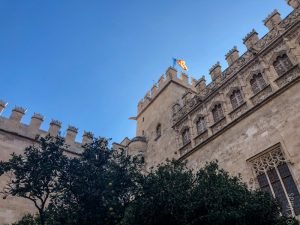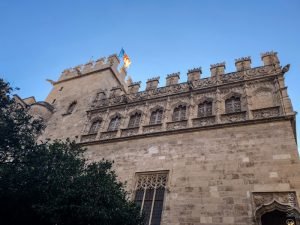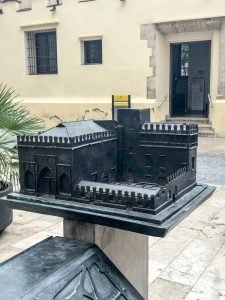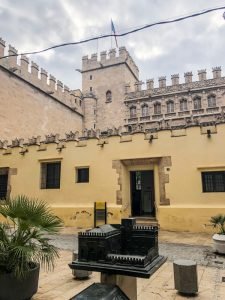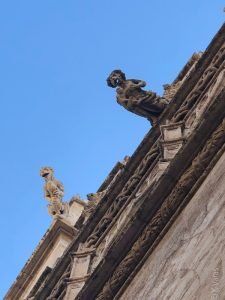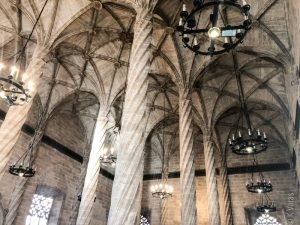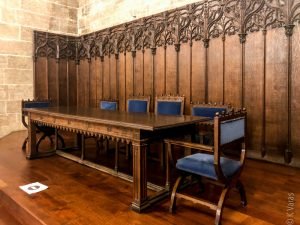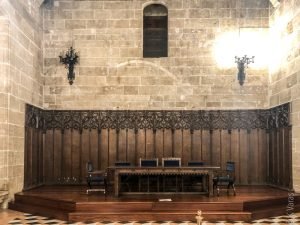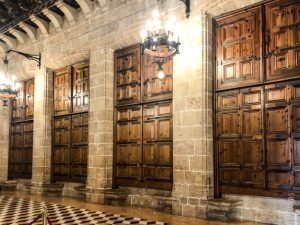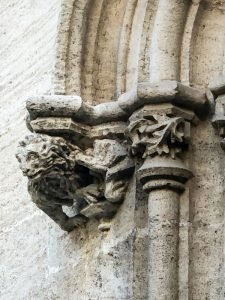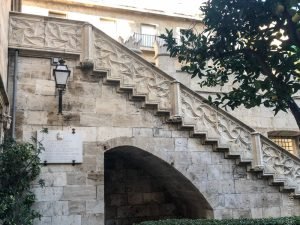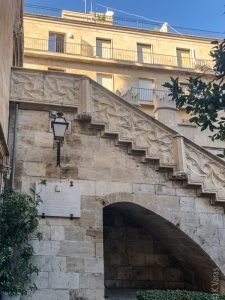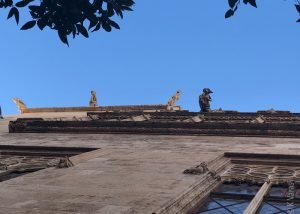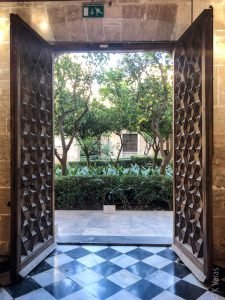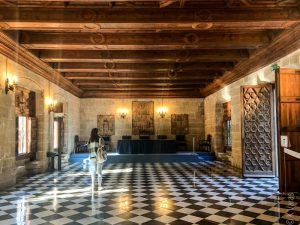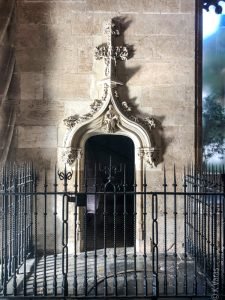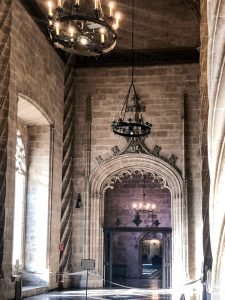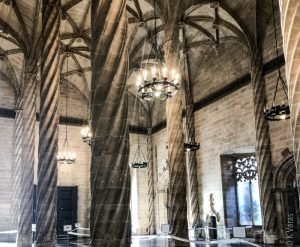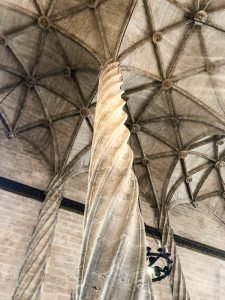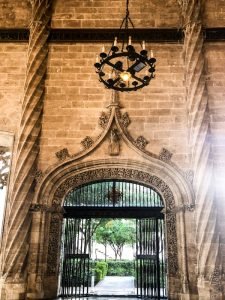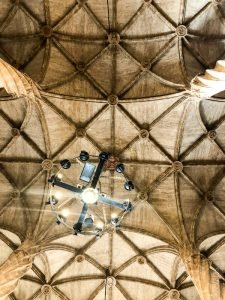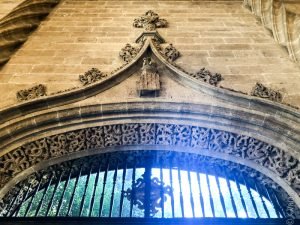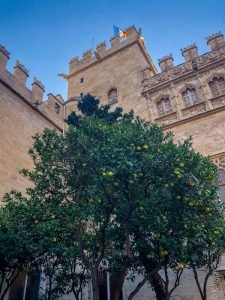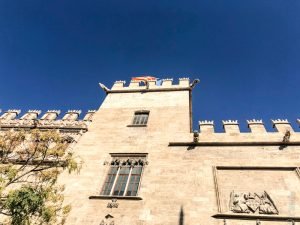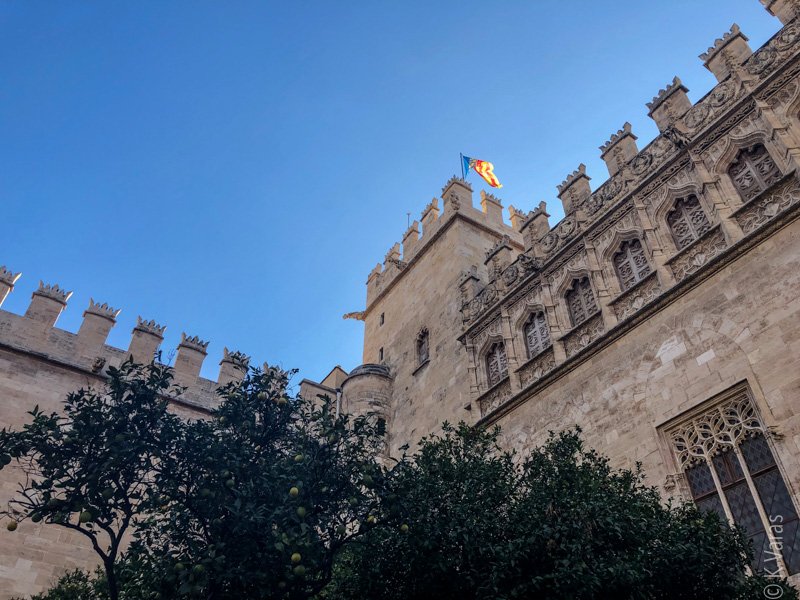
Llotja de la Seda
Valencia has a long history, as my posts so far have frequently suggested, but besides being old, it has also been a very important trading post since long before the Romans built their famous road through here. This is probably why the Silk Exchange, known as Llotja de la Seda (in Valencian) and La Lonja de la Seda (in Spanish), is one of the most emblematic and most-visited places in the city. I have walked by it (and around it) a few times already, since it sits right next door to Mercat Central, but I had not managed to go inside. Until now.
On a yet another sunny afternoon, Ewa and I decided it was time to see this very important monument. As usual, we met at Plaça de l’Ajuntament, grabbed a bite to eat, and waited for the complex to open at 3pm. Unsurprisingly, once again the entrance was free and we were the only two visitors inside. The current entrance is hidden in the back and once we passed the ticket area, we were able to enter the large garden patio full of–quelle surprise–orange trees. To enter the main trading floor, we had to go through the garden, though, I suppose, that wasn’t necessary in the old days when the beautiful main doors were used.
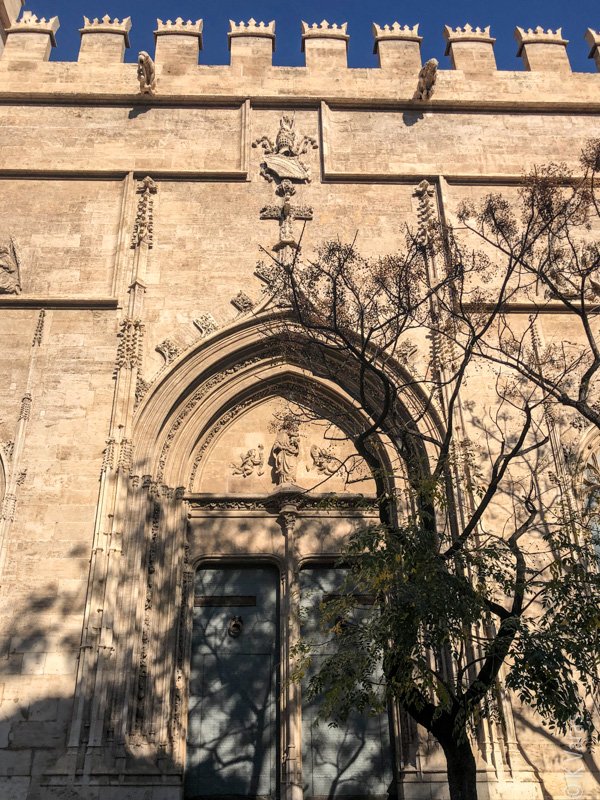
Llotja de la Seda was built between 1482 and 1548, at a time when the history of the Valencian Silk Road was just beginning and the Muslims were being expelled from Spain by the forces of Ferdinand and Isabela. Most of the silk at that time came from Italy, but it became the most important trade in this city as well, enough to be proclaimed “main fruit of the Kingdom.” Over time València also became a major producer of silk but that museum is still on my list of places to visit. For now I was able to try and imagine what it was like to be a merchant in the XV or XVI century, making deals in the beautiful hall that is la Sala de Contratación (the Contract Hall), also called the Columnario. It is a large space, lavishly decorated and supported by many twisted columns, columns that made me think of the twisted threads of silk. This was the place where merchants, silk and otherwise, would work out their contracts. For a really interesting description of the Valencian silk trade, I highly recommend this entry in Mètode, an online journal from Universidat de València (it’s in English!). Merchants in debt would be imprisoned in the central tower, the entrance to which is in this room, but all you can see of it now is the spiral staircase.
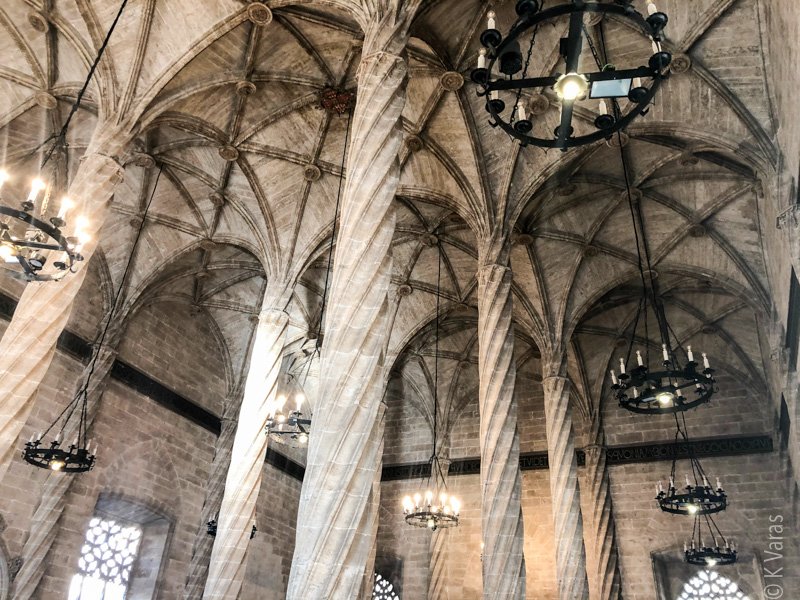
We reached the next part of the complex, Consulat del Mar (Consulate of the Sea), via what looks like a foyer but was originally a chapel, one in which the afternoon sun created a marvellous corner thanks to a beautiful stained-glass window. This building has two stories, the lower of which was the home of the Tribunal del Mar, the first sea merchant tribunal to be formed in Spain. The upper chamber, reached by an outside stone staircase, has a stunning ceiling, and both rooms have the original tables and chairs used when the exchange was a working one. The whole building is now a UNESCO World Heritage site, a totally deserved honour as many “firsts” related to the development of modern trade happened here.
One of the things that are a bit curious about this place are the gargoyles on the walls of the buildings. We were actually told about them a while back, during the trip to Peñíscola, by our very energetic guide. He spent quite a bit of time talking about gargoyles, and their meanings, specifically pointing out the ones somewhere in Ciutat Vella, that were rather obscene, at least according to some more sensitive souls. It appears that in the XV century, it was perfectly OK to adorn buildings, and especially busy buildings like the Silk Exchange, with rather crude representations of the sins of humanity, as a warning or reminder, I suppose. Since Julio, the guide, did not tell us where to find the “offending” gargoyles, it was a fun surprise to notice them here.

The whole complex is so beautiful, architecturally speaking, that I couldn’t help feeling very envious of the people who are its neighbours. What I wouldn’t do to have such a view outside my windows daily!




